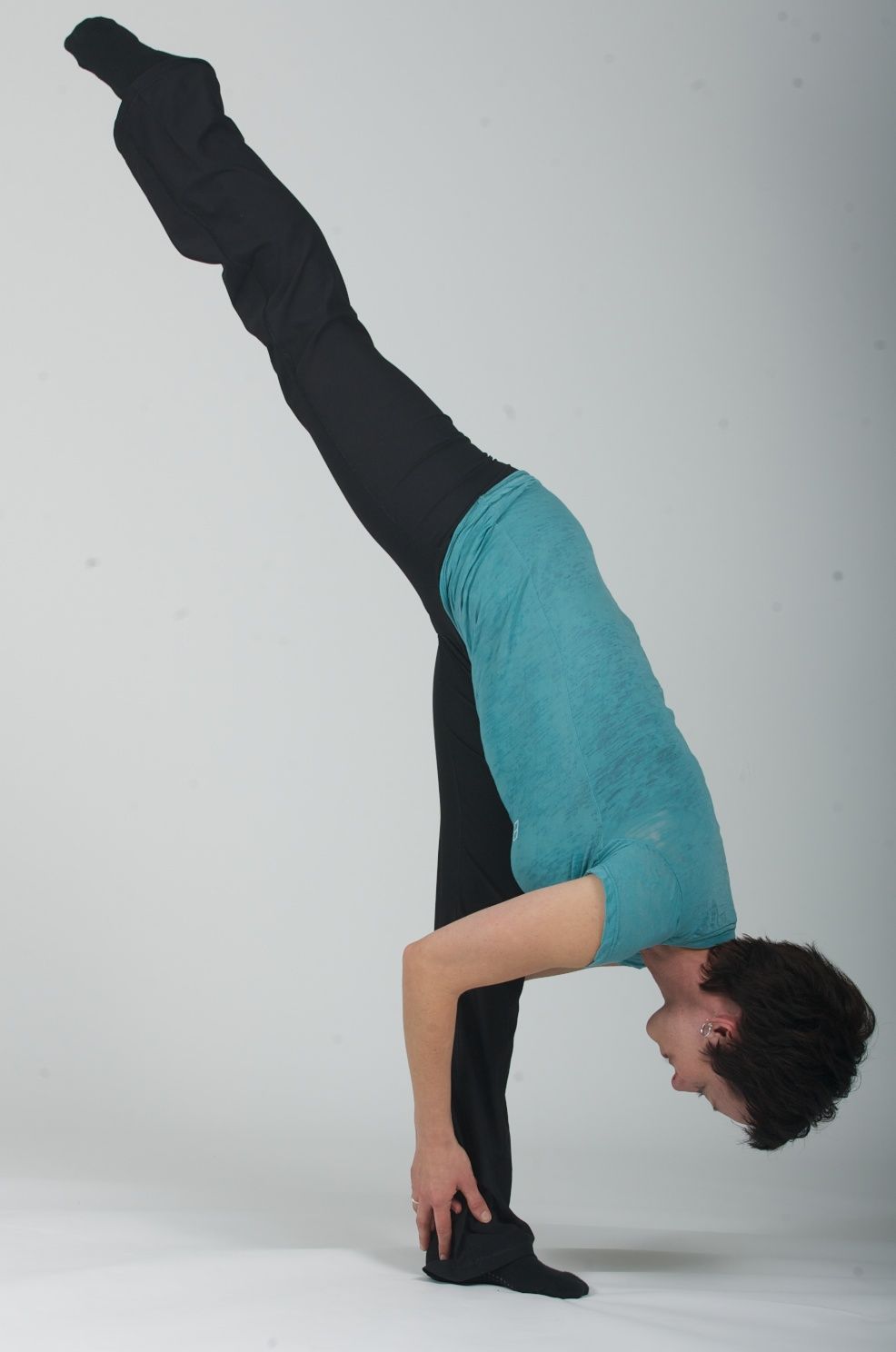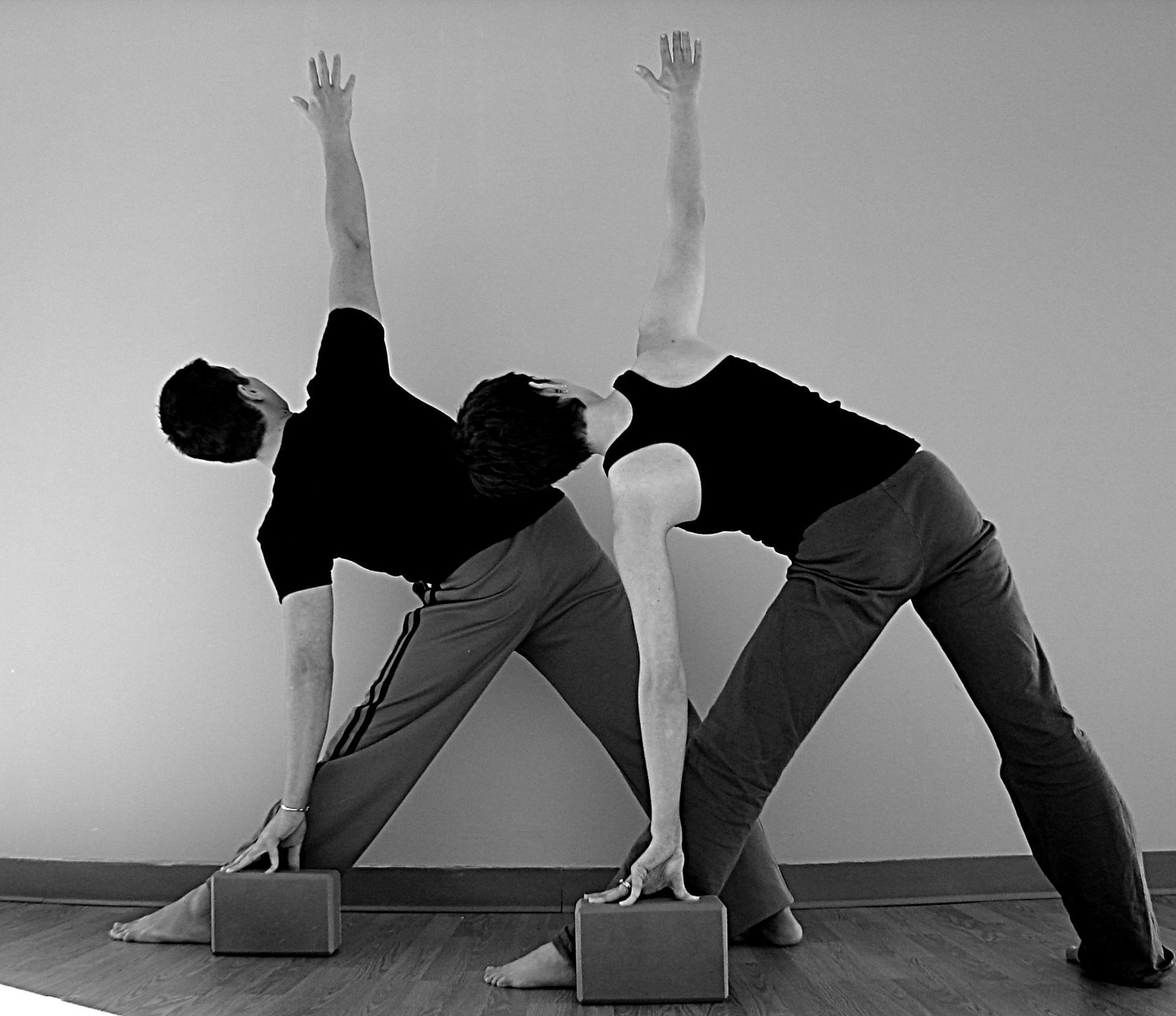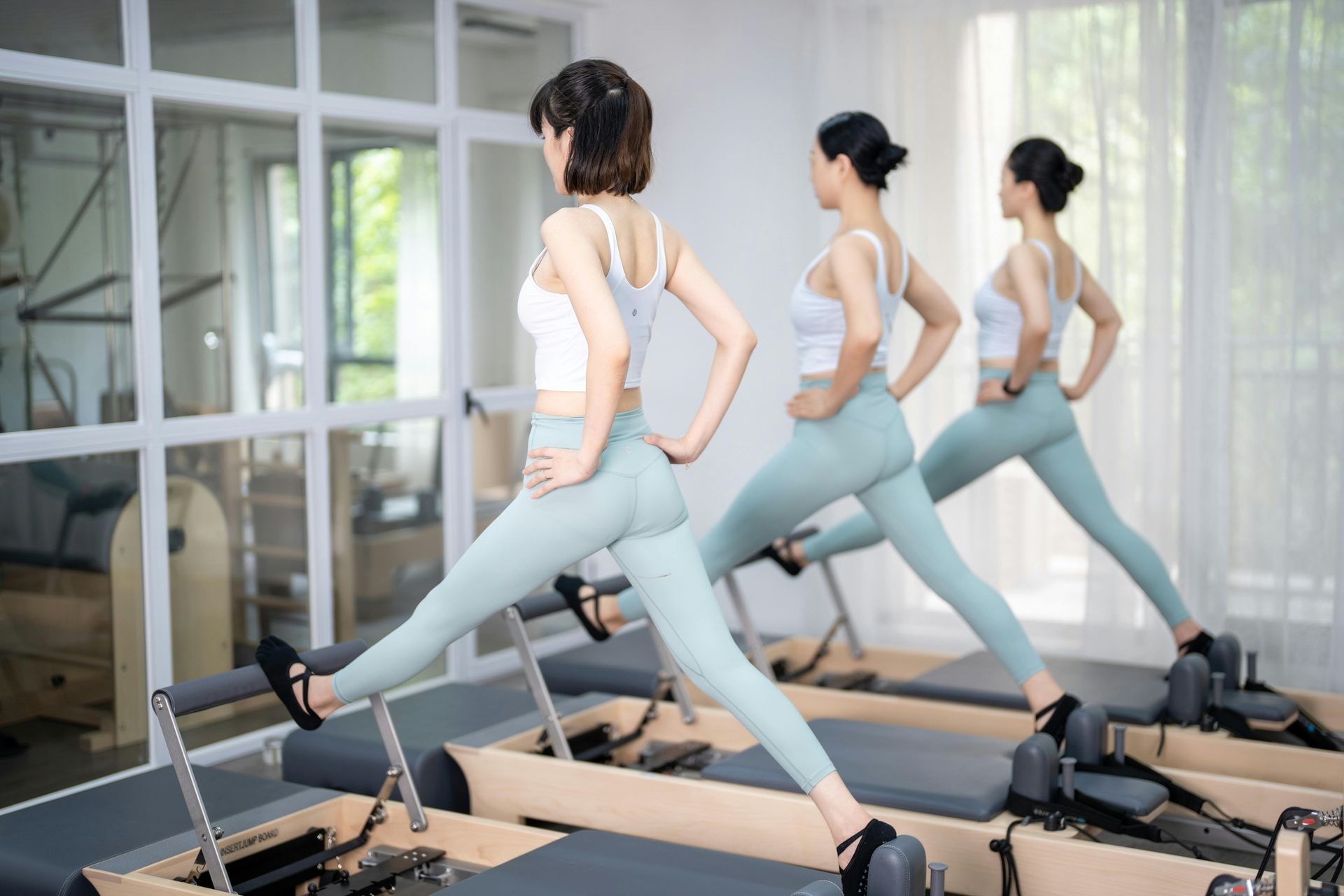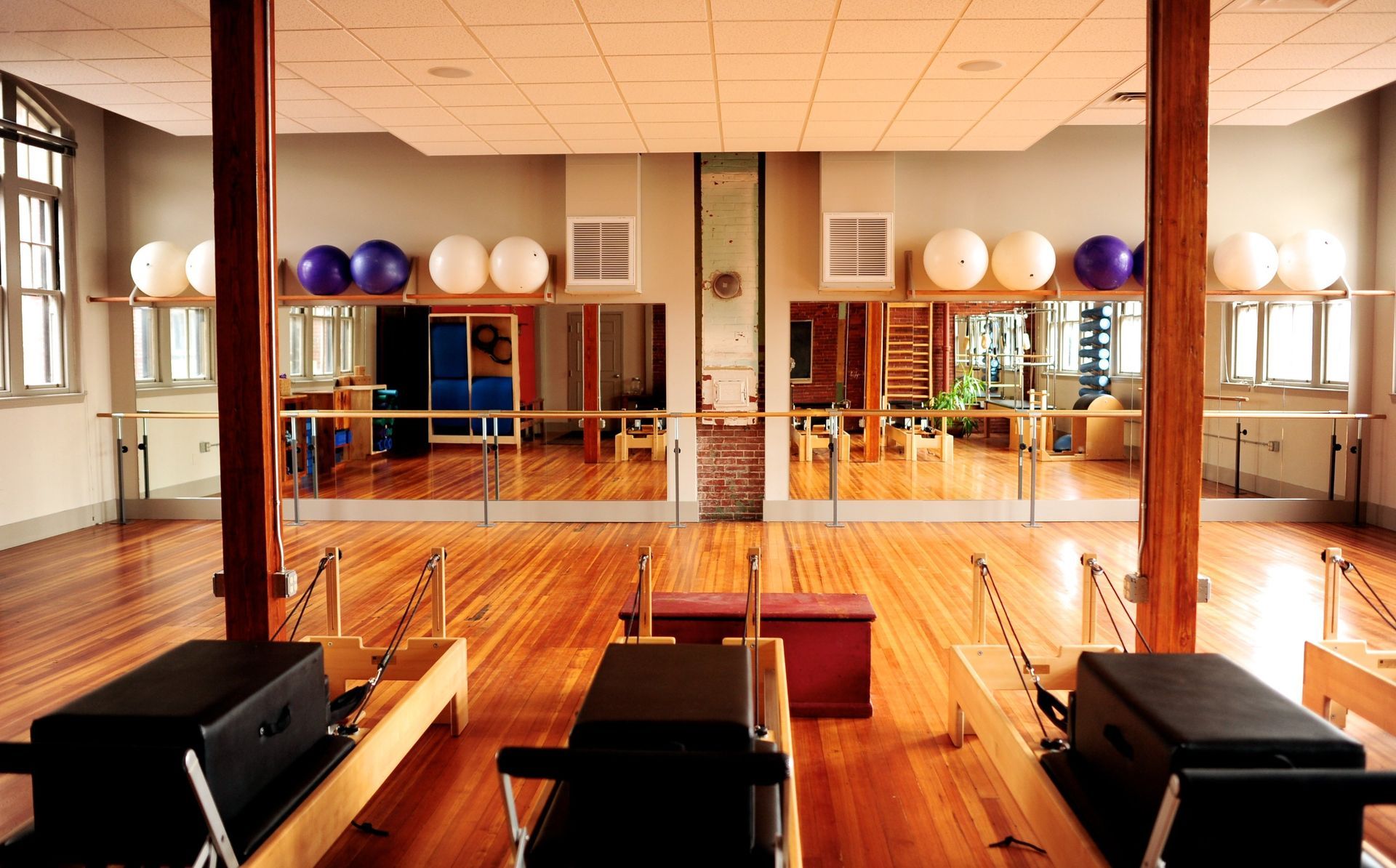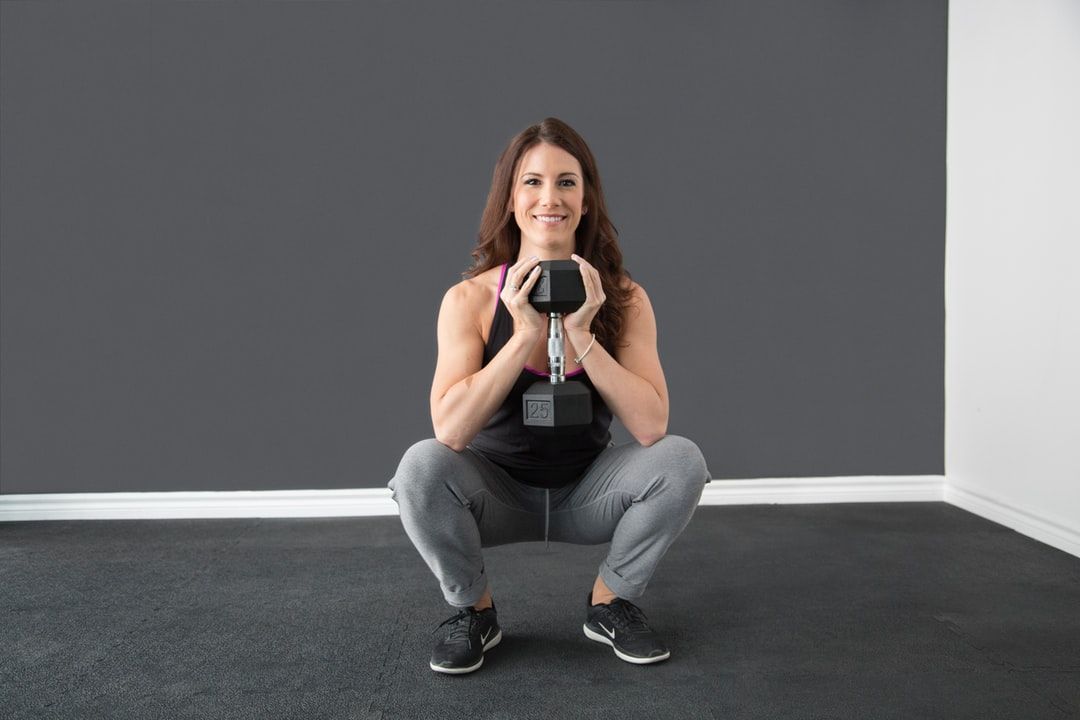What is the Dancing Section in BarSculpt Barre all about?
Back Dancing, Bridge Dancing & Knee Dancing: What They Are, Why They Matter, and How to Do Them Right

If you've ever taken a BarSculpt class, you've probably experienced a deceptively simple yet incredibly effective series near the end of class that focuses on small, rhythmic pelvic movements. For many clients—especially those newer to the method—it’s a moment of curiosity, confusion, or even discomfort. That section is often referred to as back dancing, and today we’re breaking down exactly what it is, where it came from, how it evolved, and most importantly—how to actually feel it working in your body.
Spoiler: it's not just about your glutes. And it’s definitely not about “grinding.”
🔍 First, What Is Back Dancing?
Back dancing is an original exercise from the Lotte Berk Method (USA). In its earliest form, back dancing was done on your back, with your PSIS (posterior superior iliac spines)—those bony landmarks on either side of your low back—staying on the floor.
The movement focuses on small, controlled tilts of the pelvis, isolating the lower portion of the pelvis while keeping the upper pelvis and spine neutral. These micro-movements are designed to target the deep abdominals, pelvic floor, and glutes through precise muscular coordination.
It’s important to note: this isn’t a glute bridge or a full hip thrust. It’s subtler than that—and more intentional. The focus is on lengthening the back, engaging the abdominals to tilt the pelvis, and allowing the glutes to assist but not dominate.
🤔 “Bridge Dancing?” That Wasn’t Part of the Original Method
You’re right—and here’s the backstory.
When I began developing BarSculpt, I wanted to maintain the integrity of the Lotte Berk exercises I had learned and loved—but I also wanted to make them more accessible, less awkward, and biomechanically clearer for the modern client.
So I introduced what I now call Bridge Dancing: a variation of back dancing done in a low bridge position, where the hips are lifted a few inches off the ground. This slight lift adds space and leverage while still keeping the focus on small pelvic tucks. It’s less awkward than flat-on-your-back back dancing, and for many, it’s easier to understand.
And while back dancing was once the standard, in BarSculpt, Bridge Dancing is now the norm.
It still delivers all the benefits of back dancing—core activation, pelvic mobility, glute engagement—but in a more universally comfortable and intuitive position.
🧠 Let’s Compare the Three: Back, Bridge, and Knee Dancing
To help you understand each one’s purpose, here’s a breakdown:
1. Back Dancing
- Position: Supine, hips on the floor, PSIS grounded
- Movement: Tiny posterior pelvic tilts (tucks), no lift
- Muscles: Deep abdominals, pelvic floor, glutes
- Feel: More internal, foundational
- Why we use it: Teaches pelvic control and deep core engagement
- Modern role: Rarely used in class; foundation for learning mechanics
2. Bridge Dancing (BarSculpt standard)
- Position: Supine, hips slightly lifted in a small bridge
- Movement: Small pelvic tucks using abdominals, glutes assist
- Muscles: Primarily posterior chain (glutes, hamstrings, spinal stabilizers)
- Feel: Accessible, rhythmic, stabilizing
- Why we use it: Easier to teach, more natural range for most people
- Modern role: Our go-to format for this section of class
3. Knee Dancing
- Position: Upright kneeling, often leaning slightly back
- Movement: Small pelvic tucks forward and back
- Muscles: Primarily front body—quads, hip flexors, lower abdominals
- Feel: Strong, intense, thigh-dominant
- Why we use it: Advanced variation when glutes are pre-fatigued
- Modern role: Used sparingly for healthy knees & trained clients
👀 "I’m Not Sure I’m Feeling It Correctly…" That’s Okay!
If you’re still wondering whether you’re doing it right, you’re not alone. These small movements challenge your mind-body connection as much as your muscles.
Here’s how to refine the feeling:
✔️ Check your pelvis
In Bridge Dancing, you want the lift low—just enough to create space. If you’re so high that your ribs are flaring, you’re not in the right position. Try lowering your hips and focusing on the lower abdominals pulling in and up.
✔️ Adjust your feet
If the glutes feel overactive or dominant, slide your feet slightly further away from your seat or separate them wider. This increases the demand on the core while minimizing the tendency to grip the butt.
✔️ Slow it down
Don’t rush the tucks. Try holding a tuck for a full breath to feel how deeply the lower abs and spinal muscles respond.
✔️ Incorporate breath
Exhale as you tuck, imagining the front of your pelvis narrowing and your lower back lengthening. Inhale to release. This supports pelvic floor engagement and deep core connection.
🔄 Back and Bridge Dancing Work the Back Body. Knee Dancing Works the Front.
This is key to understand.
While all three versions work the core, the emphasis shifts:
- Back and Bridge Dancing prioritize the posterior chain—glutes, hamstrings, and the length of the spinal extensors.
- Knee Dancing activates the front body—quads, hip flexors, and rectus abdominis—with a deeper burn and higher stamina demand.
In BarSculpt, we often save knee dancing for the advanced crowd, particularly when:
- We’ve already done floor-based glute work
- The thighs aren’t pre-fatigued
- The clients have no knee contraindications
Because let’s be honest—knee dancing is hard. It demands thigh endurance and healthy joint integrity. But when done well and placed smartly in class, it delivers a final push that’s both exhilarating and empowering.
✨ Why These Movements Matter
Beyond the sweat and burn, these movements are incredibly valuable for:
- Pelvic stability
- Low back health
- Postpartum recovery
- Athletic performance
- Postural alignment
They teach clients how to move from their center, and more importantly, how to feel strong without big, explosive motion. That’s the secret sauce of barre: small moves, deep results.
🧘♀️ The Energy of the Room Matters, Too
By the time you reach this section in class, your body is warm, your brain is focused, and the music usually invites you to let go of self-consciousness.
In Bridge Dancing, we often say: “It’s not about the height, it’s about the depth.”
This isn’t a moment to perform for the mirror—it’s a chance to drop into your body and feel the rhythm from the inside out.
When taught with care and intention, this series becomes more than just an ab and glute burner—it becomes a ritual of connection, breath, and presence.
💬 Final Thoughts: From Back to Bridge to Bold New Moves
So, is back dancing still relevant? Absolutely—it laid the foundation. But in the world of modern barre, Bridge Dancing has become the go-to for clarity, accessibility, and effectiveness.
Knee dancing? That’s your high-level finisher. Your sprint to the end. Your if-you-know-you-know moment.
Together, these movements form a powerful trilogy—each serving a unique purpose, each asking your body to show up a little differently.
So next time you're in that low bridge, tucking to the beat, know this:
You’re not just pulsing. You’re training the deepest parts of your core.
You’re building resilience, control, and strength that lasts beyond class.
And if you're a teacher or studio owner who wants to learn how to deliver this type of embodied movement with precision and confidence, you’re invited to join me in BarSculpt Teacher Training—where we go far beyond choreography and into the why behind every move.
📣 Want to Teach This Work?
BarSculpt offers Mat and Reformer Teacher Trainings (in-person and online) that include all manuals, anatomy, and teaching support—so you can bring clarity and connection to every class you lead.
🖱️
Click here to learn more and get certified »
📩 Or reach out directly to [your email] if you’d like help deciding which training path is right for you.


